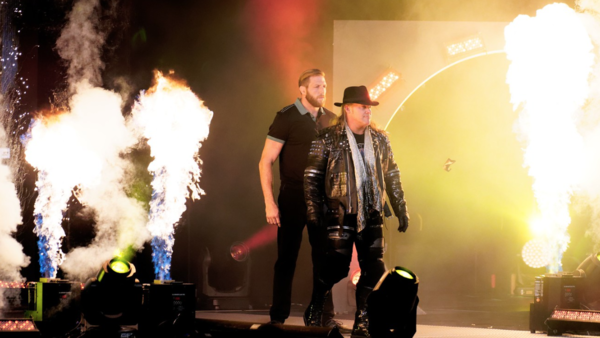How AEW Perfected Pro Wrestling Storytelling

The mere name makes it all about him, which will inevitably result in resentment, a year or so down the line, when Sammy Guevara tires of his role as the battered first line of defence in tag team matches. For now, the dynamic is harmonious—but symbiotic. Jericho requires his younger cohorts to protect his title and his status. Guevara, Santana and Ortiz need Jericho's profile to rise up to the top of the card. It's easy to believe in a faction—pro wrestling is a brotherhood—and the angles that have built the faction have been both tremendous and effective.
The Inner Circle formed on the first episode of Dynamite. The babyface alliance, a hybrid of the Elite and the Nightmare Family, fought back in week two. In week six, there was no separation, but a chaotic brawl with no winner. Amid all this, AEW foreshadowed, advanced, or booked countless matches: Cody Vs. Chris Jericho, Cody Vs, MJF, Jake Hager Vs. Dustin Rhodes, The Young Bucks Vs. Proud-N-Powerful, and, of course, the Match Beyond—AEW’s teased version of WarGames that will make full, bloody use of all moving parts at the epic conclusion. The final chapter of a grand story.
The mechanisms used to advance this core, logical storytelling meet the entertainment remit of pro wrestling, which is more theatre than sport, ultimately.
Every pro wrestling plot leads to the same destination: a match. The way AEW builds and plots those matches through segments has created, in under two months, so much excellent episodic television. Chris Jericho is a genius at promoting his matches because his unscripted promos capture the perfect heel balance of threat and fun. He knows how to pop a crowd, and AEW entrusts him to do that. AEW’s WCW trope revival also works to great effect; the limo ride shared between Cody and Schiavone put over the idea that Cody has an actual, interior life. He wasn’t a character, he was a person.
The detail of AEW’s storytelling is magnificent, too.
CONT'D...(4 of 5)